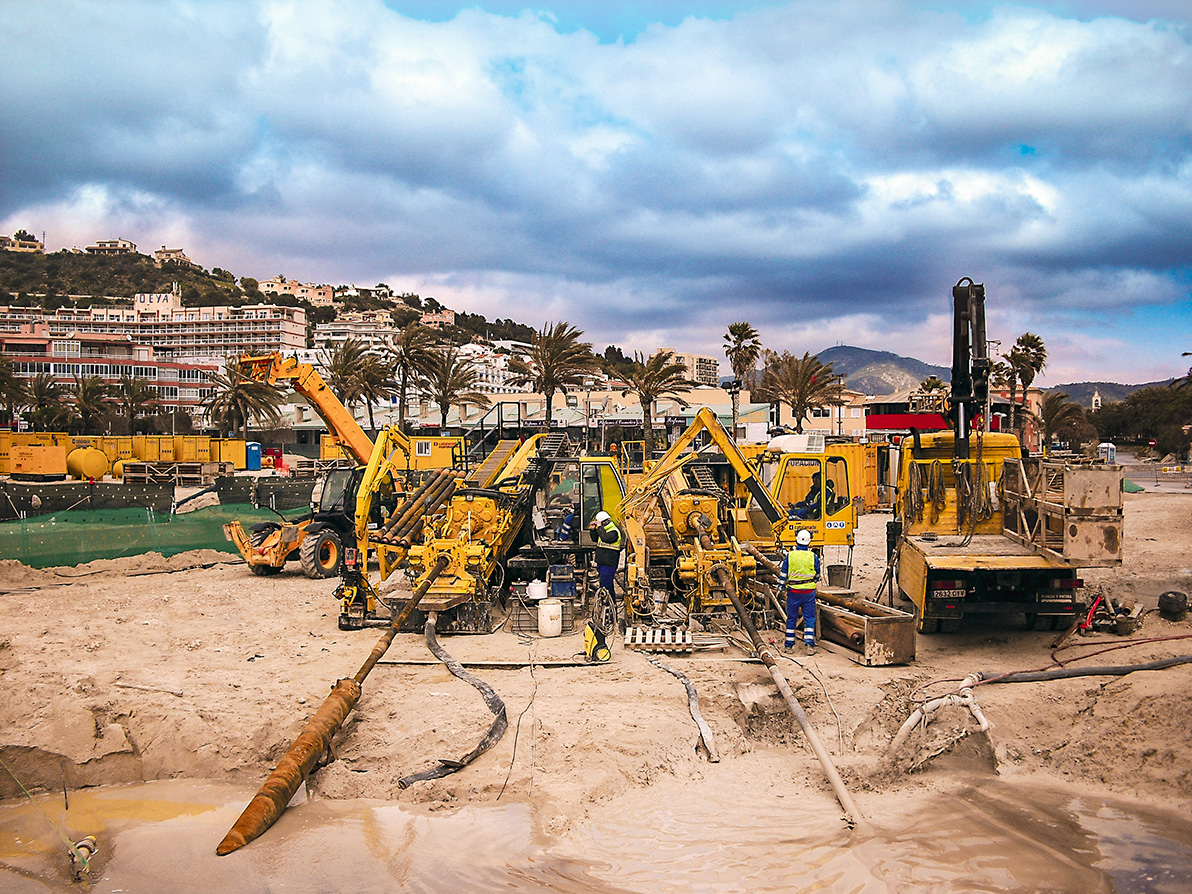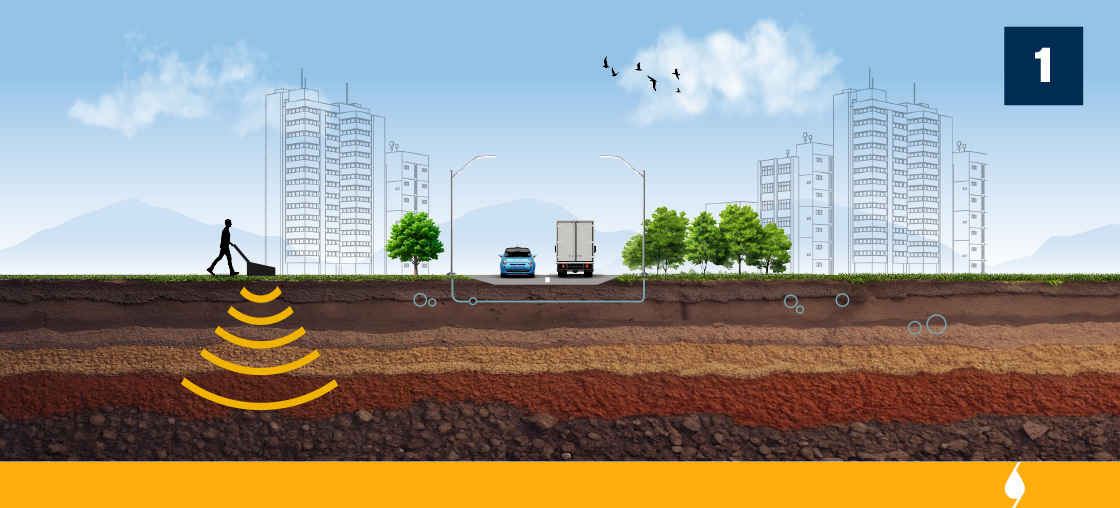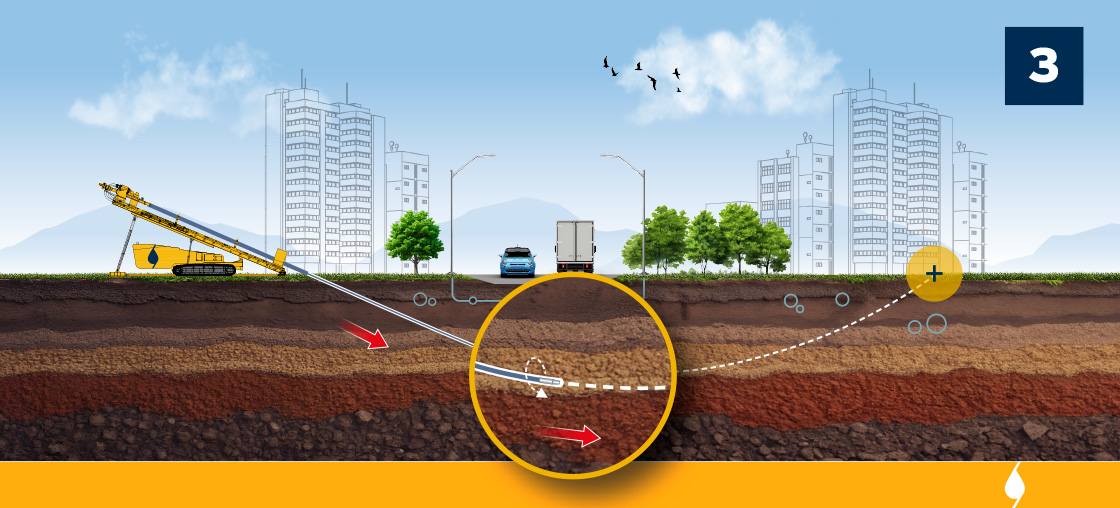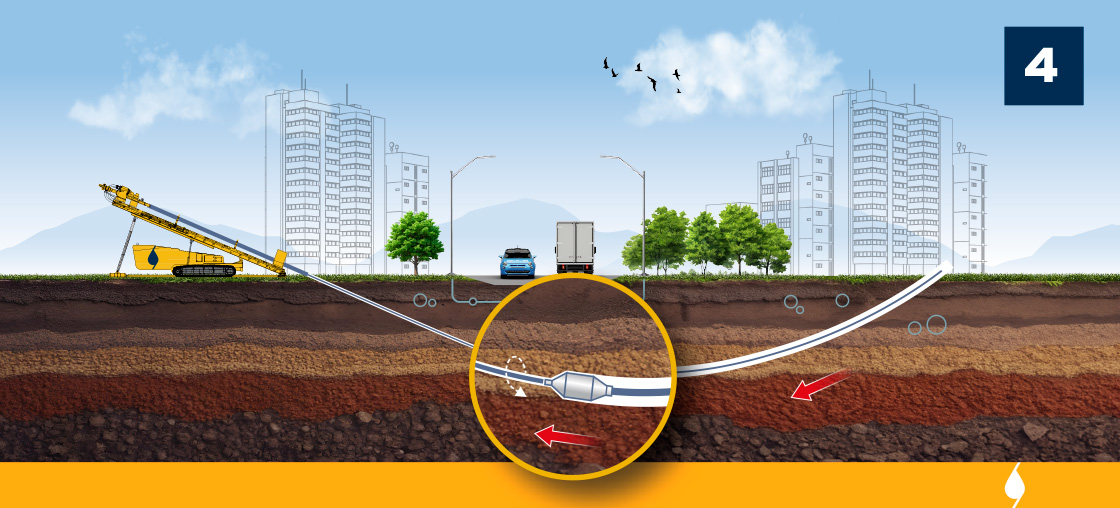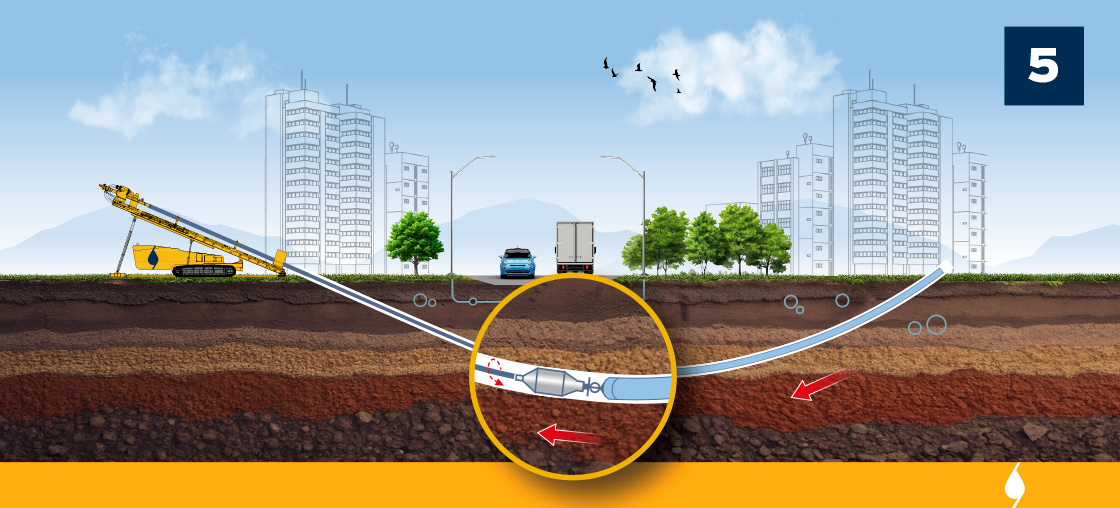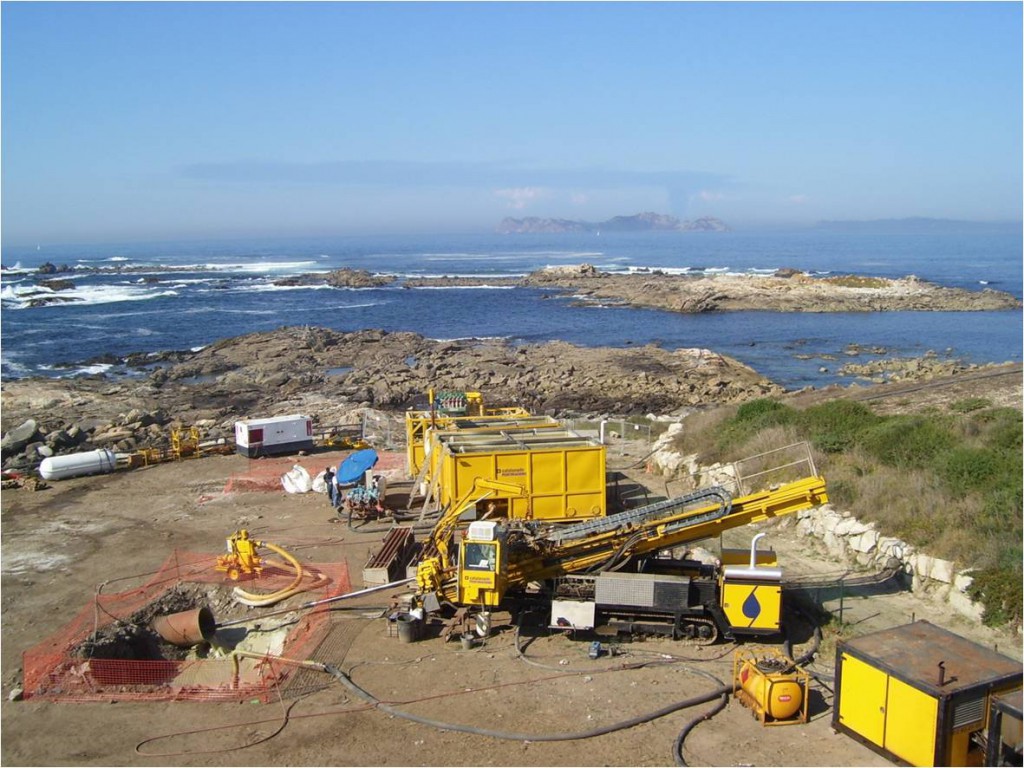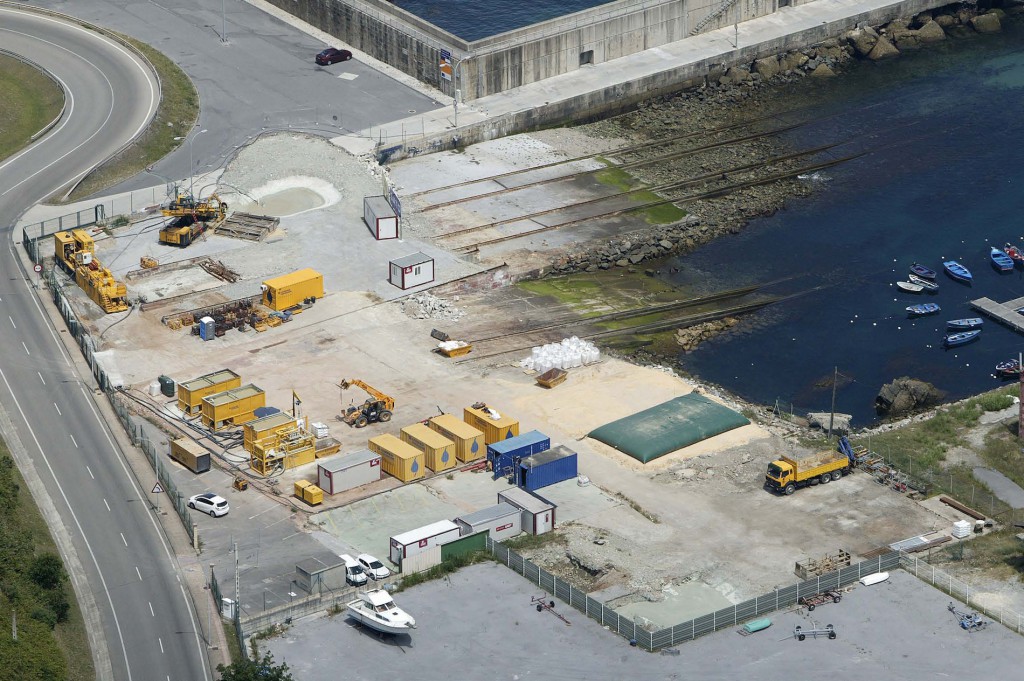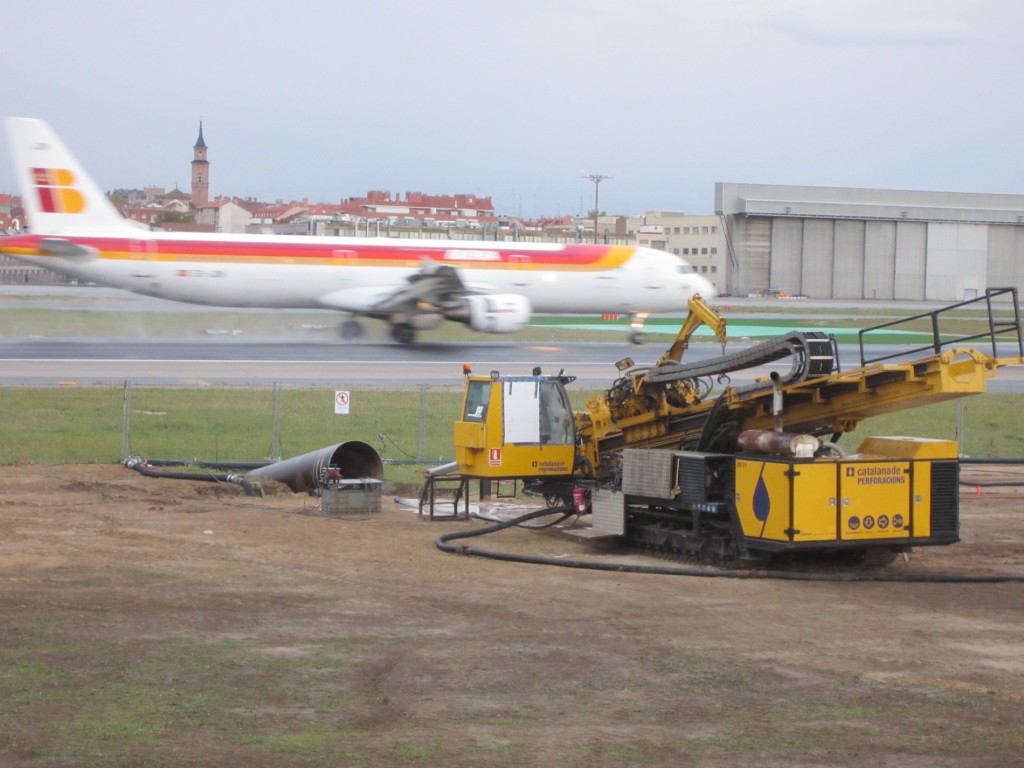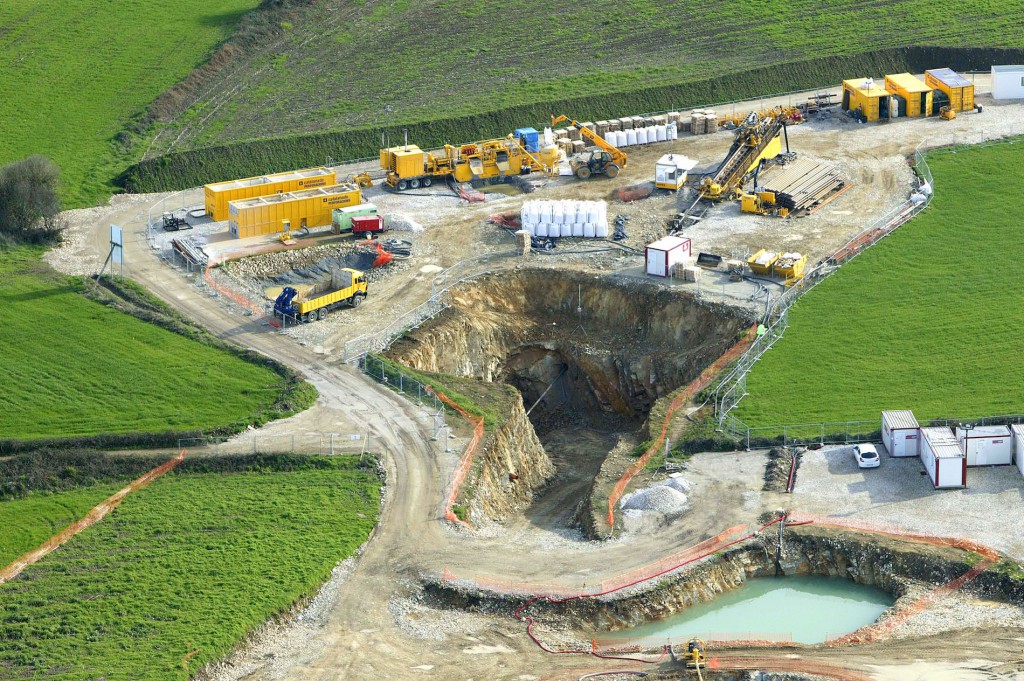HORIZONTAL DIRECTIONAL DRILLING
Domènec Pintó
BUSSINES ADMINISTRATOR
WORK PROCESS
Preliminary study
Preliminary studies are essential to ensure the success of each drilling project, as they minimise the risks associated with the geology and the presence of underground utilities, including but not limited to electricity cables or gas pipes. Before each crossing, we perform a detailed survey using techniques including GPS radar to locate underground utilities, analyse the topography and, in the case of rivers or marine areas, perform a bathymetry. We also supplement this information using electrical tomography to gain a comprehensive understanding of the existing geology.
We treat each task separately, using the most appropriate techniques for each crossing, with a view to avoiding unforeseen events during the implementation phase and achieving overall savings at the end of the project. As a result of these studies, we obtain in-depth information about the type of ground to be drilled and we can select the most suitable machinery for each project, ensuring optimum execution.
Borehole design/pre-engineering and constructive design of the borehole:
Based on the information obtained from the field survey, the engineering team then works out the most appropriate design for each crossing, taking into account the limitations of the technique, project constraints, bore radius, depth requirements and existing services.
In addition, as part of this preliminary construction design, detailed plans are prepared, setting out the areas where the equipment will be installed, the temporary occupation areas, the areas where the pipes will be welded, as well as the plans and profiles of the boreholes, all optimised according to the specific features of each construction site.
This ensures that the project is technically feasible and appropriate to the specific conditions of each situation.
Pilot drilling:
Pilot drilling is the first step in the horizontal directional drilling process, as part of which an initial borehole is drilled into the ground to establish the final borehole path. As part of this process, a precision GPS system is used to control and guide the drill head with high accuracy along the path.
We have our own GPS equipment and specialist staff, capable of managing any GPS system to ensure that the pilot borehole follows the established route, aligning itself with the entry and exit areas
and following the previously established parameters of different types of navigation, such as walk-over, Paratrack II or Gyro, adapting to the specific needs of each project.
This technology allows real-time monitoring of deviations and precise route adjustment, ensuring optimal execution of the final borehole and minimising risks or unforeseen events during project execution.
Widening operation:
Tunnel widening is the process that makes it possible to increase the borehole diameter to the requested dimensions, facilitating the installation of the pipe or tube. In general, the tunnel is widened by 30% more than the diameter of the pipe to be installed to allow for the correct installation of the pipe, thus ensuring an optimal and trouble-free installation.
We have a wide range of wideners adapted to all types of terrain, from the softest to the rockiest and most abrasive, offering customised solutions for each type of geological condition.
Pipeline installation:
The pipeline installation phase is a non-stop operation, where no interruptions can be allowed to ensure the success of the process. It is therefore essential that all pipework is pre-welded before insertion into the tunnel. The installation is carried out in regression, i.e. from the end section towards where the machine enters the tunnel, thus ensuring a continuous and controlled insertion.
Once the process has begun, it cannot be stopped, as the tunnel has been widened to its maximum diameter, and any interruption could jeopardise the installation. This approach ensures the accurate and safe installation of the pipeline, minimising risks and avoiding possible damage or blockages along the way.
Uses
- Crossing of existing services: such as underground transport systems, energy and telecommunication networks, gas pipelines and sanitation systems.
- Crossing of tracks/infrastructure: roads, busy streets, canals, paths, railway tracks, tunnels and buildings
- Passage through natural elements: rivers, streams, lakes, natural parks, slopes, ravines and other geological formations.
- Protected areas and biotopes
- Marine and coastal infrastructure: installation of services under beaches, cliffs and other coastal areas.
- International interconnections and cross-border infrastructures
- Renewable energy installations
- Repair and maintenance of existing services







